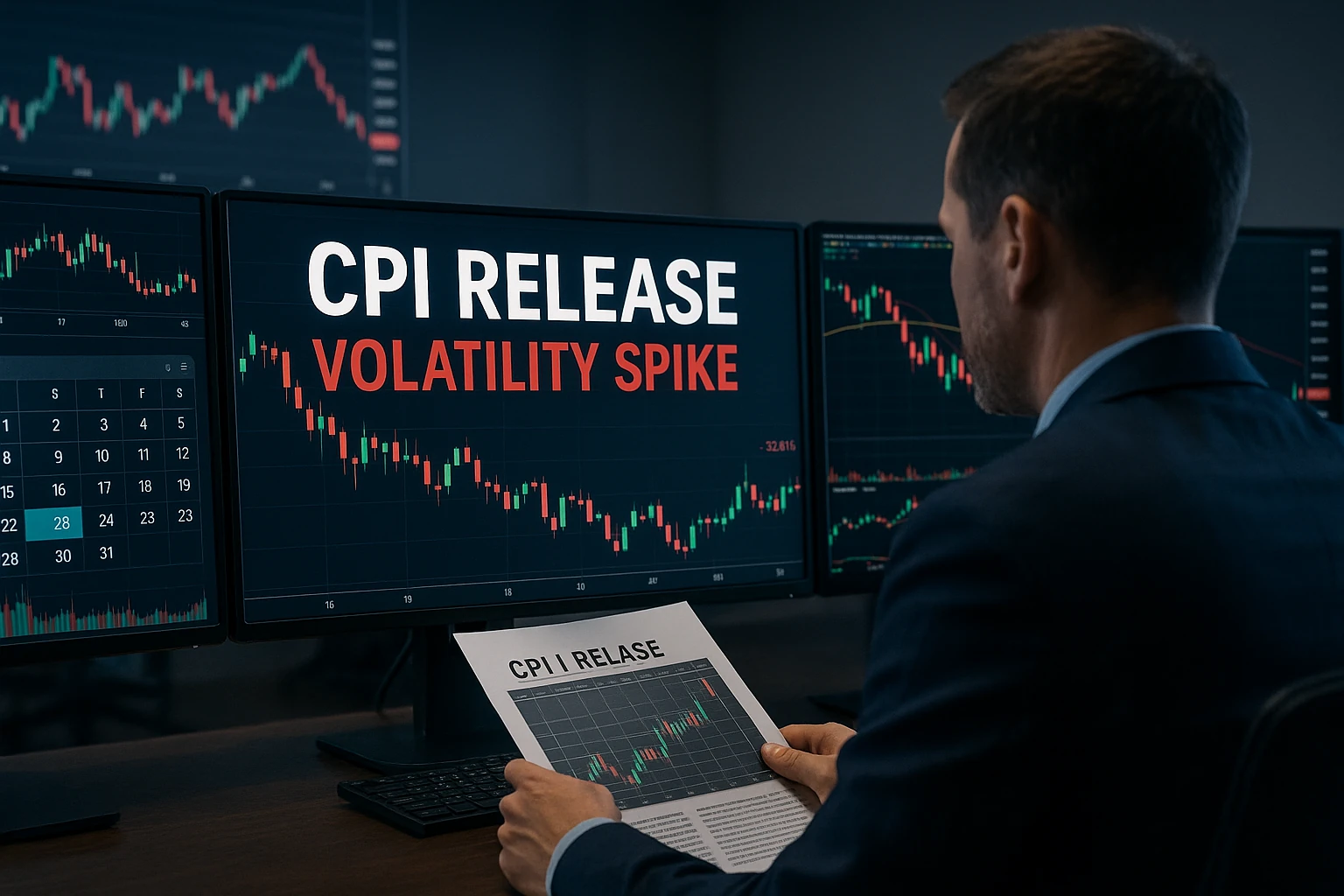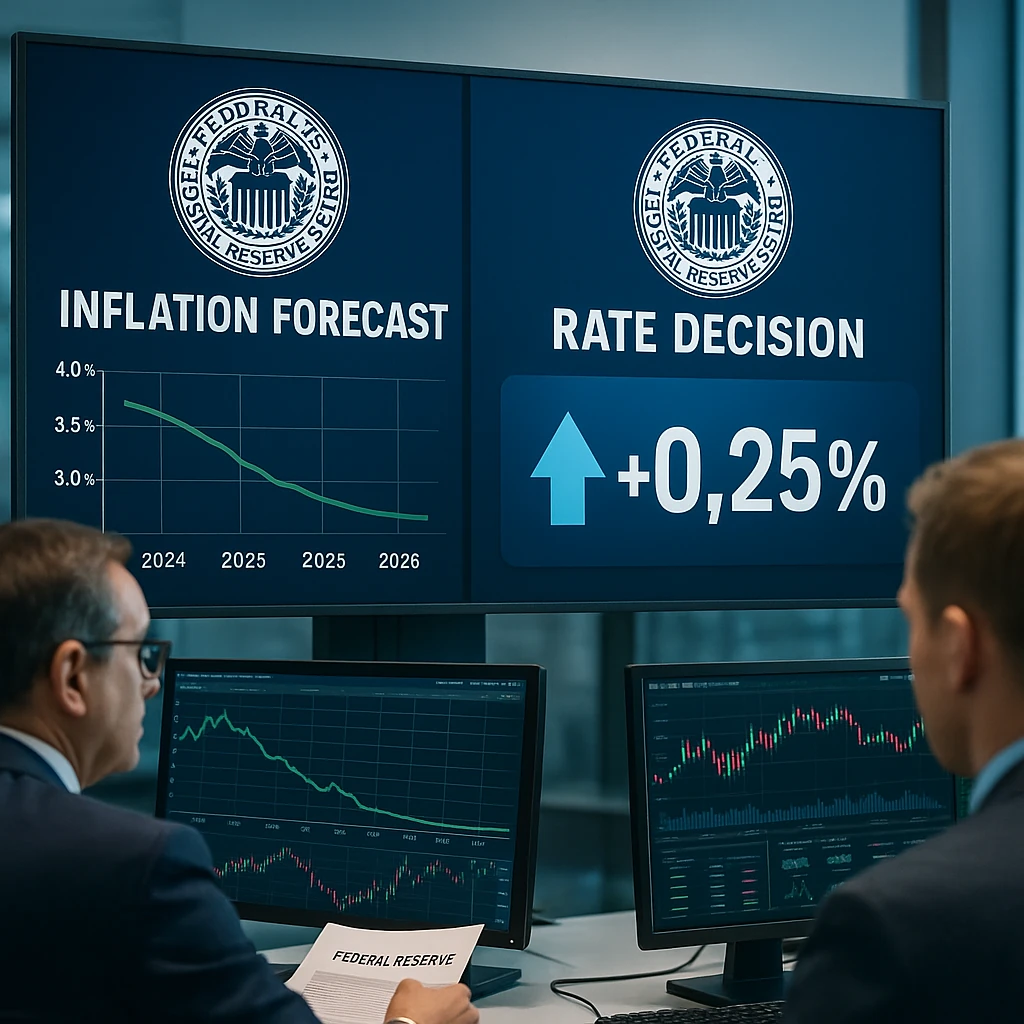
How Inflation Data Is Moving the Stock Market This Quarter
The tug-of-war between inflation data and the stock market has once again taken center stage this quarter. Each new Consumer Price Index (CPI) release triggers volatility across major indices as investors try to anticipate the Federal Reserve’s next move. Even small surprises in inflation readings can swing billions of dollars in market value within minutes — showing how tightly connected macro data and equity sentiment have become.
With traders dissecting every line of the latest CPI report, the focus has shifted from headline numbers to underlying trends such as core inflation and shelter costs. These metrics shape both the Federal Reserve inflation outlook and short-term stock positioning. Understanding this connection helps investors avoid knee-jerk reactions and instead spot opportunities as markets reprice expectations for rate cuts or continued tightening.
📊 Key Points
- 📈 The CPI report’s monthly changes are now the top driver of stock volatility.
- 🏦 Investors watch every clue in the official CPI report for signs of policy shifts.
- 💬 The Federal Reserve inflation outlook shapes both tech and bank sector sentiment.
- 💡 Learn why day traders and long-term investors react differently to inflation headlines.
- 🧭 Explore our Stock Market for Dummies Guide to master market psychology during inflationary cycles.
Inflation Reports and Their Immediate Impact on the Market
Each month, when the Bureau of Labor Statistics releases the latest CPI figures, the connection between inflation data and the stock market becomes unmistakable. Investors dissect every number — from headline inflation to core readings — looking for clues about whether prices are cooling enough for the Federal Reserve to consider rate cuts. The resulting volatility highlights how sensitive the market has become to even minor changes in inflation expectations.
During the most recent CPI report, stocks initially rallied as inflation came in slightly below forecast, only to reverse later in the session as traders questioned whether one report would be enough to change the Federal Reserve’s longer-term stance. This whipsaw behavior has become common in 2025, as market participants price in every possible shift in policy tone. According to the official CPI data, energy and shelter costs continue to play the largest role in keeping inflation elevated.
The live chart above shows how the S&P 500 responded immediately following each major CPI release this quarter. Notice the sharp one-day candles — often followed by calmer sessions once traders digest the data. Such reactions reflect both automated algorithmic trades and shifting sentiment from fund managers who rebalance based on inflation-driven yield forecasts.
These quick reversals have forced investors to adapt. Many short-term traders, such as those following our Penny Stock Alerts, capitalize on these bursts of volatility, while long-term investors look for confirmation of broader inflation trends. The CPI’s influence has effectively replaced earnings season as the top macro driver of market direction.
How CPI Volatility Shapes Short-Term Trading Opportunities
Every time new inflation figures hit the wires, day traders instantly react — often within seconds. These fast responses are driven by algorithms programmed to detect changes in the CPI headline or core readings. Such bursts of volatility show just how intertwined inflation data and the stock market have become. A small deviation from forecast can spark large movements, especially in tech-heavy indices like the Nasdaq and S&P 500 futures.

Many traders attempt to “fade” the initial move — buying dips or shorting spikes that occur right after the CPI data drop. While this strategy can be profitable, it also carries significant risk due to sudden liquidity gaps. Understanding the CPI report impact helps traders plan positions ahead of time and avoid emotional reactions.
For investors following momentum-based strategies, watching price reactions around 8:30 a.m. ET on CPI release days can offer critical insight. The size and duration of these reactions help determine whether the broader trend is strengthening or weakening. The most skilled traders combine technical setups with fundamental awareness to capitalize on inflation-driven volatility.
Day traders typically look for confirmation from bond yields and dollar strength before making moves. A lower-than-expected CPI print often sends Treasury yields down and growth stocks higher. The opposite occurs when inflation surprises to the upside, tightening financial conditions and sparking sell-offs. Mastering these correlations is essential for anyone trading during inflation-sensitive periods.
The Federal Reserve Inflation Outlook and Market Reaction
Beyond day-to-day price swings, the Federal Reserve’s guidance remains the single most important influence connecting inflation data and the stock market. When the Fed suggests inflation is cooling, equities tend to rally as investors anticipate rate cuts. But when policymakers indicate that inflation is still “sticky,” stocks often retreat — especially interest rate–sensitive sectors like tech, housing, and small caps.
Fed Chair comments and policy minutes are dissected in real time by traders across the world. According to Reuters U.S. Markets, the latest policy statements have emphasized a data-driven approach, tying future rate decisions directly to inflation trends. This heightened sensitivity means that every CPI release effectively doubles as a Fed preview.
As shown above, the 10-year Treasury yield often moves in the opposite direction of growth stocks. When inflation expectations rise, yields push higher — making future earnings less valuable in present terms. That’s why traders monitor this chart closely to gauge whether rate pressures are easing or tightening.
Market reactions also depend on how inflation readings align with Fed forecasts. If CPI numbers match or undershoot expectations, optimism returns. When readings surprise to the upside, risk assets fall and the dollar strengthens. Understanding this rhythm is key to interpreting the Federal Reserve inflation outlook and its influence on asset pricing.
Many investors use this knowledge to adjust portfolio exposure. For example, rotating into defensive stocks, energy, or gold during periods of rising inflation risk — while returning to growth and tech sectors when inflation appears to peak. For practical strategies, visit our Stock Market for Dummies PDF guide for beginner-friendly insights on positioning during shifting monetary cycles.
Expert Forecasts and Investor Sentiment for the Coming Quarter
Market analysts remain divided on whether inflation will continue cooling into next quarter. Some economists believe price pressures are easing steadily, while others warn of renewed volatility. This uncertainty keeps traders glued to every CPI release — the critical link between inflation data and the stock market. Even small revisions in monthly reports can shift expectations for future interest-rate cuts.

According to Investopedia’s inflation overview, the relationship between inflation and equities is historically cyclical: markets rise on controlled inflation but struggle when prices accelerate faster than wages. Recent Federal Reserve statements suggest that policymakers remain cautious, watching for consistent 2% trends before easing policy. This delicate balance continues to shape global sentiment and portfolio rotation strategies.
Investor psychology plays a massive role in market direction. When inflation cools, optimism returns to high-growth sectors, boosting valuations in tech, consumer discretionary, and financials. Conversely, when inflation data surprises to the upside, defensive stocks and commodities tend to outperform. Understanding these behavioral shifts helps investors interpret the evolving metals market outlook and broader equity trends together.
Market Outlook for 2025–2026
Analysts project moderate CPI readings through early 2026 if energy prices remain stable. However, unforeseen geopolitical shocks or supply-chain disruptions could re-ignite inflation fears. The resulting stock reaction to inflation could once again mirror 2022’s pattern — rapid sell-offs followed by equally sharp recoveries once clarity returns. For this reason, many professional investors maintain diversified exposure across equities, metals, and short-duration bonds.
As always, keeping an eye on forward guidance from the Fed and tracking CPI trends at Yahoo Finance’s inflation dashboard can help traders anticipate market swings. For deeper insight into how these macro forces influence short-term trading setups, check out our Day Trading Guide — updated weekly with actionable analysis for volatile environments.
Frequently Asked Questions About Inflation and the Stock Market
1. Why does inflation data affect the stock market so strongly?
Inflation data influences interest rates, consumer spending, and corporate profits — all major drivers of stock prices. When inflation rises faster than expected, investors anticipate tighter Federal Reserve policy, often causing equities to fall.
2. What is the CPI report impact on trading?
The CPI report often triggers immediate volatility. Algorithms and traders react within seconds to whether inflation comes in above or below forecasts, creating large intraday swings across major indices.
3. How does the Federal Reserve inflation outlook move investor sentiment?
A dovish outlook (suggesting rate cuts) typically boosts stock prices, while a hawkish tone (suggesting more hikes) can pressure equities and lift Treasury yields.
4. Which sectors react most to inflation trends?
Tech and consumer discretionary stocks are most sensitive to inflation expectations because their valuations rely heavily on future earnings. Energy and commodity sectors tend to benefit when inflation rises.
5. How can investors prepare for the next inflation cycle?
Diversify across assets — stocks, metals, and bonds — to reduce exposure to sudden market shocks. Monitor CPI reports and Fed guidance to stay ahead of policy shifts. For hands-on strategies, explore our Day Trading Guide.
Conclusion: Adapting to an Inflation-Driven Market
The tug-of-war between inflation data and the stock market shows no sign of slowing. As CPI readings, rate decisions, and policy statements continue to dominate headlines, investors who understand these connections gain a clear edge. By tracking CPI trends, interpreting Fed outlooks, and monitoring cross-market signals, traders can adapt faster than the broader market.
Whether you’re navigating volatility as a day trader or managing a diversified long-term portfolio, inflation awareness is essential in 2025 and beyond. Stay informed, stay patient, and use reliable analysis to identify opportunities before momentum shifts. For deeper insights, visit our Stock Market for Dummies Guide and explore practical strategies tailored to real-time market conditions.
📊 Stay Ahead of Every Market Move
Get real-time updates and trading insights at TradeStockAlerts.com. Learn how inflation trends, Fed policy, and investor sentiment shape your next opportunity.

Pauline Lei
Market analyst & lead writer at TradeStockAlerts.com. Pauline tracks how inflation data, CPI reports, and Federal Reserve policy shifts ripple through equities, bonds, and commodities. Her research bridges macro data with tactical trading strategies—helping readers recognize when inflation trends translate into actionable opportunities or early warning signs in the stock market this quarter.
Focus Areas: Inflation & CPI Data Federal Reserve Policy Market Sentiment Sector Rotation
Educational content only—not investment advice. Use independent judgment and confirm data before trading decisions.